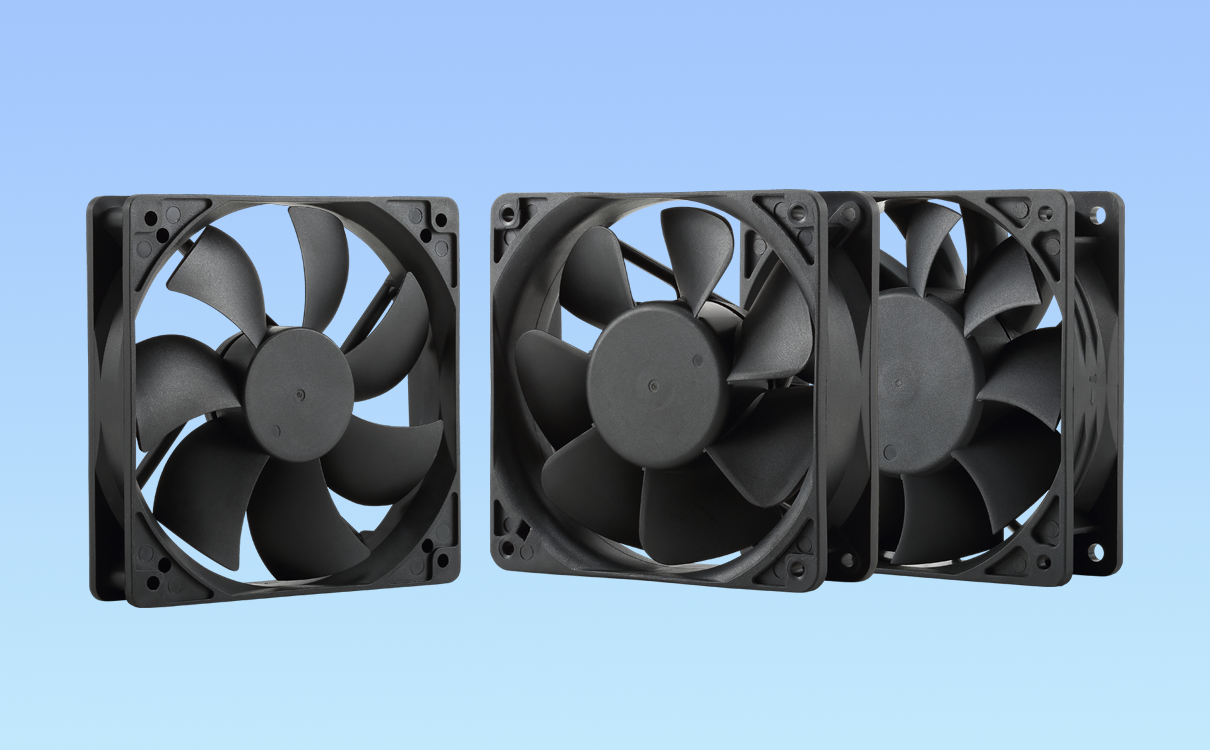Cooling fans are essential components in modern electronic devices, widely used in computers, communication equipment, home appliances, industrial machinery, and more. These fans play a critical role in maintaining stable operation and improving system efficiency. For procurement companies and manufacturers, understanding the technical terms related to cooling fans is vital for proper selection and application. This article provides an overview of common cooling fan functional terms and their meanings, helping you better understand how cooling fans work and the key considerations when choosing them.

1. Auto Protection Function
The auto protection function is a safety mechanism in cooling fans. If the fan encounters issues such as jamming or blockage during operation, the auto protection function automatically activates, cutting off the power to prevent further operation. This prevents excessive current flow, which could damage the circuit or other electronic components. The goal is to protect the equipment, ensuring that the fan stops when a fault occurs to avoid further damage. This feature is especially important in high-precision devices that operate under high loads for extended periods.
2. FG Function (Feedback Signal)
The FG function is a common feature in cooling fans that outputs a square wave signal to reflect the fan's operational status. The FG signal (Feedback Generator) alternates between high and low levels, allowing users to monitor the fan's speed by checking the signal frequency. If the fan malfunctions or stops, the frequency of the FG signal will change or disappear, indicating a fault. This allows users to monitor the fan's condition in real-time and ensure proper device operation.
3. RD Function (Rotor Detection)
The RD function is an alarm feature in the fan. Under normal conditions, the RD signal is low, indicating that the fan is operating normally. However, if the fan encounters issues like jamming or external blockage, the RD signal switches to a high level. Users can detect this change to identify if the fan is malfunctioning and take action to repair or replace it. RD functionality is commonly used in devices that require high reliability and real-time monitoring, such as servers and power equipment.
4. TC Function (Temperature Control)
The TC function is a temperature control feature that adjusts the fan speed according to the surrounding temperature. When the ambient temperature rises, the fan speed increases to enhance cooling efficiency. Conversely, when the temperature drops, the fan speed decreases or stops to conserve energy and reduce noise. This function is crucial in high-temperature environments, such as industrial equipment and electronics, where the fan must adjust its speed in real-time to maintain optimal cooling performance. TC also improves energy efficiency, extends the fan's lifespan, and reduces unnecessary power consumption.
5. PWM Function (Pulse Width Modulation)
PWM is a common method for controlling fan speed using an external PWM signal. The PWM signal controls the fan's speed by adjusting the duty cycle, allowing precise and flexible speed adjustments. Compared to traditional voltage regulation, PWM offers higher efficiency, lower power consumption, and lower cost. For applications requiring low noise and high cooling efficiency, PWM is especially important. With PWM control, users can maintain optimal cooling performance while keeping noise levels low.
6. Voltage Control
Voltage control adjusts the fan speed by modifying the supply voltage or voltage signal. There are two types of voltage control:
- Supply Voltage Control: This involves directly adjusting the fan's supply voltage to change its speed. While simple, this method provides less precision and cannot fine-tune fan speed accurately.
- Voltage Signal Control: By adjusting the amplitude of the voltage signal, this method allows for more precise speed control within a specific range, providing a finer control experience.
Voltage control is commonly used in devices that require specific noise and cooling performance, especially when fan speed needs to adjust according to load changes.
7. Dust and Moisture Proof
Dust and moisture proof features are essential for fans operating in specific environments. For devices that work in dusty or humid conditions for extended periods, fans must have strong dust and moisture resistance to protect internal components from external environmental factors.
- Dust Proof: The fan prevents dust from entering the device, avoiding dust buildup on fan blades and heat sinks, which could reduce cooling efficiency or even damage electronic components. An effective dust-proof design significantly extends the fan's lifespan.
- Moisture Proof: The fan prevents water vapor or liquid water from entering the device, avoiding electrical faults or short circuits caused by moisture. Moisture-proof design is especially critical in humid environments, such as electronics operating in high humidity, where it helps improve the device's reliability.
Dust and moisture-proof designs can be achieved by adding dust filters, sealing rings, and enhancing the fan housing's sealing. These features are particularly useful for outdoor equipment, factory machinery, and automotive fans that operate in harsh environments.
Understanding the technical terms and functions of cooling fans is the first step toward selecting the right fan. Each function and feature is closely related to the fan's performance, reliability, and application environment. By mastering key terms like auto protection, FG function, PWM speed control, and TC functionality, procurement staff and engineers can make more informed decisions and ensure that devices operate efficiently and reliably.
With 24 years of experience in cooling fan manufacturing, Ruiapple Electric is dedicated to providing high-quality, customized cooling fan solutions. Our products not only offer a wide range of functionalities but are also tailored to meet specific customer needs, helping improve device performance and reliability. If you have any questions about selecting cooling fans, feel free to contact us for professional support.






